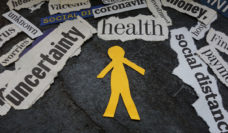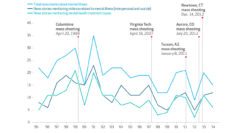Public Health Post: What is Big Health, and how would you explain the company and mission to someone who is unfamiliar?
Juliette McClendon: Big Health creates digital therapeutics using effective mental health treatment like cognitive behavioral therapy (CBT) and translating them into a fully automated digital format. The goal is for people to go through and learn the skills and techniques from CBT that they would learn in a therapist’s office but with an animated therapist. This model really increases access to therapy because you do not need a prescription to use it and its fully automated design overcomes provider shortages.
Our mission is to bring millions back to good mental health, and we do that by making our therapeutics available to as many people as possible. We currently have 10 million users, and we primarily provide our therapeutics at no cost to employees of large self-funded employers.
Do you think some companies buy their employees access to therapies like those provided by Big Health are just doing it to check a box to say that they offer mental health services?
In talking with hundreds of benefits leaders at large companies, since the pandemic, mental health has very much become a top priority for the vast majority of companies and probably all the companies I’ve been speaking with. It really is a priority, and it’s a priority in many companies coming down from the top. There is definitely an increased recognition within the corporate world around the impact of the pandemic on people’s mental health and just mental health in general, even outside of thinking about the pandemic.
How do digital therapeutics benefit those with more serious mental illnesses who may require medication in addition to talk or digital therapy measures?
Our therapeutics really can be provided alongside both therapy and medications. For example, if somebody is experiencing multiple comorbidities or multiple mental health conditions, they may also need help with something that a digital therapeutic targets, for example insomnia or anxiety, in addition to other therapies.
How has your career at the Veterans Affairs Boston Healthcare System in the public sector influenced your role as the Director of Medical Affairs at Big Health in the private sector?
A lot of my career leading up to Big Health was focused on research and understanding how to identify how to improve healthcare and mental health services for marginalized communities who are traditionally left out of the research that we do, our understanding of mental health conditions as well as our understanding of how to treat them.
The VA helped me learn about healthcare systems and how they operate. When I went to the VA, I became interested in the role of discrimination and racism in impacting mental health. I focused particularly on people of color, but it’s something that impacts marginalized groups across the board. I was able to really hone in and develop expertise on how to improve the cultural relevance of our treatments to make sure that they’re actually addressing the specific needs of, for example, veterans of color.
What really attracted me to Big Health is that I understood that part of what was going to lead to equity in healthcare was going to be innovation in Silicon Valley in the corporate world. I felt like that was what was going to drive innovation and change, and that is what we really need within our healthcare system to improve equity.
Do you think there is a magnified effect of pandemic trauma in young adults of color?
Sometimes people call it a double pandemic: this idea of racial violence and the pandemic. I think that those two things come together and intersect in a way that I don’t think we’ve fully grasped or fully elucidated yet. I think we’ve focused on each one separately, but we really have to spend more time understanding how that intersection is impacting people color and particularly youth of color. Before the pandemic, we had this trend of increasing suicide rates among young Black boys, and I can only imagine what those rates will look like for 2021 and moving forward. People of color, especially Black and Latinx people were disproportionally affected by the pandemic, and that’s across the board.
Do you see a future in digital therapeutics targeting populations that experience trauma from discrimination or apps tailored to marginalized communities?
This would be my dream: I would love to be able to create something that would address and directly talk about things like racism and racial stress. I hope so, but I think that even in the absence of something that focuses specifically on racism and discrimination, I think there are ways that current therapies and therapeutics can be improved to really take into account culture in a more intentional and inclusive way.
Mental Health and Trauma: Context and Consequences will be held virtually on Monday, Feb. 14 beginning at 10:30 a.m. Register for the webinar here.
Photo provided














